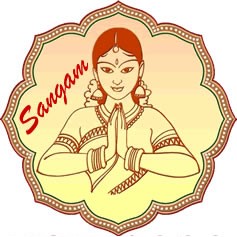by Sachi Sri Kantha; published January 8, 2004
This year, in November, Velupillai Prabhakaran – the leader of Liberation Tigers of Tamil Eelam (LTTE) reaches 50 years. Come November, there will be cautious appraisals, left-handed compliments, snide editorials and even vapid curses from his political adversaries and critics who prostrate at the feet of these adversaries. Thus, I would like to beat this gang of bilious pundits (Chos, Dixits, Munis, Rams, Coomarasamys, Hooles, Jayatillekas, Mahindapalas and Weerakoons) in the electronic web by presenting a tribute to Prabhakaran. His adversaries and critics would prefer to portray Prabhakaran (dubiously and by straining historical facts) as a South Asian Hitler or Pol Pot and what not. They have valid reasons to bleat. By his mercurial military skills, Prabhakaran has turned the current borders of Sri Lanka into a rump of what it was in 1983.
 Those who view Prabhakaran through cock-eyed logic are oblivious to the history of the American revolution and its leader. In my eyes, Prabhakaran is a 20th century Asian model of George Washington. I have already stated this and it has appeared – in merely 58 words – under the apt caption ‘Comeback Commandos’ in the letters section of Time magazine (International edition) of July 3, 2000. To cite,
Those who view Prabhakaran through cock-eyed logic are oblivious to the history of the American revolution and its leader. In my eyes, Prabhakaran is a 20th century Asian model of George Washington. I have already stated this and it has appeared – in merely 58 words – under the apt caption ‘Comeback Commandos’ in the letters section of Time magazine (International edition) of July 3, 2000. To cite,
“What Sri Lankan rebel leader Velupillai Prabhakaran and his Tamil Tiger guerrillas are carrying out is nothing new. The fight to the death for an independent homeland was patented by George Washington and his gang 225 years ago. And why the fuss over Prabhakaran’s penchant for guns, when the Second Amendment provides the same security to all Americans?”
In 1990, I was engaged in a debate in the letters column of the now-defunct Asiaweek (Hongkong) magazine with an anonymous Sri Lankan (an anti-LTTE individual) on the theme of comparing the merits of LTTE rebels with America’s Founding Fathers. That debate led me to read more about America’s revolutionary war and what I benefited is briefly presented below.
The patriotic signers of the Declaration of Independence pledged their lives, their fortunes and their honor to the cause of independence. But King George III called these rebels ‘traitors.’ The American patriots, led by George Washington, were made up of farm boys, restless apprentices and laborers. In 1778, King George’s army in the American colonies had 50,000 troops, “while Washington considered it a good day when he could field 5,000,” according to historian Joseph Conlin. The then population of the 13 original Amerian states was 2.5 million, almost identical to the now-partly dispersed Tamil population in Sri Lanka.
In the words of Conlin, “The rebels were fighting a defensive war in their homeland. As many twentieth century ‘wars of liberation’ have shown, such wars bestow a great many advantages on the defenders. Militarily, the patriots did not have to destroy or even decisively defeat the British. Rebels on their own ground need only to hold on and hold out in the hope that weariness, demoralization and dissent take their toll on the enemy.” That’s what happened to King George’s troops. That’s what will probably happen to the Sri Lankan army in Eelam as well. Despite the braggadocio penned by the parochial editors and defence analysts in Colombo, the Sri Lankan army is not (and has never been since 1990) in a fighting mood. These Generals and foot soldiers of the rump Sri Lankan state are portently happy (for not fighting and) to receive monthly duty-free pay checks.
The similarities between the leadership skills noted for Washington and Prabhakaran are also rather convincing. On Washington, historian Conlin wrote,
“In the early years of the Revolutionary War, he won a few small battles, such as those at Trenton and Princeton, but never a big one; his defeats were legion. Most of his years in command were spent in retreat, a step ahead of annihilation. It was in retreat that his military contribution to independence lay. If he rarely won a battle, he kept an army in the field against overwhelming odds. Washington survived in the face of repeated defeats, superior British forces, inadequate provisions, disease, almost no shelter for his men during several extremely cold winters, and often poor support from the Continental Congress for which he fought.” Prabhakaran’s plight between 1987 and 1999 was no better than what Washington faced 225 years ago. Like Mao, the Asian giant who preceded him in guerrilla warfare, Prabhakaran was at his best in retreat and re-couping his army.
Quite a number of ‘thinking-heads’ (which included Colombo Tamils, who boasted of an alphabet soup of degrees tagged to their names) and journalist hacks also criticised Prabhakaran’s leadership for his lack of education. In this aspect also, Prabhakaran resembled Washington. About the America’s father figure, Conlin had written,
“In every particular by which greatness is measured, the tall and solemn Washington comes up short. He lacked originality. He was no thinker, and seems to have read few books. He contributed no document to the rich literature of colonial protest and rarely addressed the two Continental Congresses he attended.” This suggests that tough times needed an action hero, and not an egg-head philosopher, who could play best with the cards he had been handed with. Colonial America in the 18th century had a hero in Washington, and Eelam in the 20th century has one in Prabhakaran. Of course, there were egg-heads (like Ben Franklin) in Washington’s group, but they willingly played second fiddle.
Source book:
Joseph R.Conlin, The American Past –A Survey of American History, vol.1 to 1887.